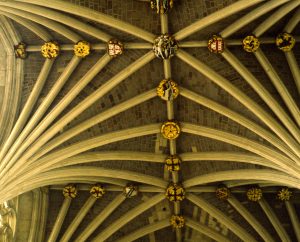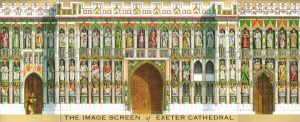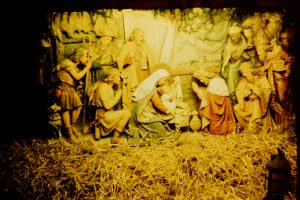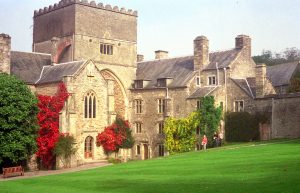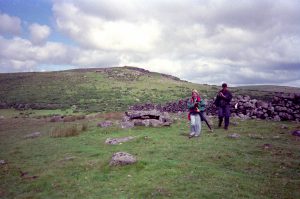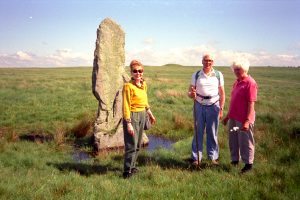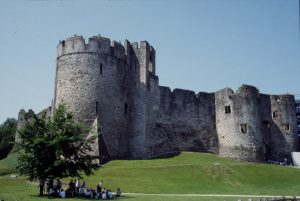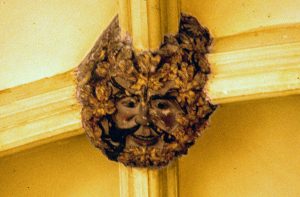 In my previous blog post, I described Exeter Cathedral as the best example of the English Decorated Gothic style of architecture. An important manifestation of this style is found in the cathedral’s stone roof bosses. Roof bosses are the keystones at the intersection of ribs in the vaulting which in fact hold things together. They serve an important function but may be quite plain in other Gothic churches. In Exeter Cathedral, however, the Exeter roof bosses are done with relief carving that is highly decorative. There are over 500 bosses in the cathedral, ranging in size from five inches in diameter in some of the side chapels to a yard across for the bosses running down the centre of the main vault.
In my previous blog post, I described Exeter Cathedral as the best example of the English Decorated Gothic style of architecture. An important manifestation of this style is found in the cathedral’s stone roof bosses. Roof bosses are the keystones at the intersection of ribs in the vaulting which in fact hold things together. They serve an important function but may be quite plain in other Gothic churches. In Exeter Cathedral, however, the Exeter roof bosses are done with relief carving that is highly decorative. There are over 500 bosses in the cathedral, ranging in size from five inches in diameter in some of the side chapels to a yard across for the bosses running down the centre of the main vault.
There is no one theme to the carvings on the bosses. Some show important biblical narratives and Christian stories with Old Testament characters such as Samson, the crucifixion, or the coronation of the Virgin. Important religious subjects are often repeated in several parts of the cathedral. The most famous of Exeter’s roof bosses is in the nave and shows the murder of Archbishop Thomas Becket in Canterbury Cathedral during the reign of King Henry II. Some bosses feature angels, including one in the Quire playing a medieval violin. Many, however, are mysterious such as the bosses of foliate faces, called Green Men in the 20th century. The meaning of the foliate faces to ancient peoples such as the Celts and the Romans is unknown.
Some of the Gothic roof boss carvings are realistic representations of nature to identify the flora or fauna represented. Others present armorial bearings indicating noble families who contributed to the decoration of the cathedral. Other are mythical or fanciful featuring dragons, mermaids or somebody’s dog.
My second Lady Apollonia West Country Mystery, Plague of a Green Man, uses the idea of the foliate faces in its title. In her tour of Exeter Cathedral in 1380, the Lady Apollonia is shown both the Becket boss and the green man boss which is featured on the cover of my book, shown in the above picture. The survival of the Becket boss in Exeter is especially interesting because King Henry VIII ordered all Becket references destroyed when he took the English church from Rome. It is not possible to remove a roof boss because it is the keystone which holds the vault ribs together. The canons of Tudor Exeter simply whitewashed the Becket boss, covered it over and so it survives to this day.
Medieval carvings such as the Exeter roof bosses would have originally been painted in brilliant colours. Restorers through the centuries repainted the bosses and other carvings in more modern paint. This was especially true for the centre bosses in the western end of the nave such as the Becket boss. More recent restorers have been inclined to clean them and expose whatever is left of the original ancient paint.
For more on the Exeter Cathedral roof bosses, click on
http://hds.essex.ac.uk/exetercath/docs/introduction.htm .
